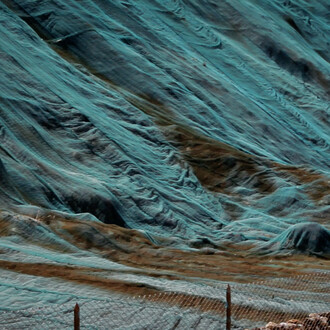This collection is named after leading petrologist Alfred Harker (1859-1939) to honour his importance to petrology and the years he spent in organising and cataloguing the collection in the early 20th Century. Harker brought together various old collections into one scheme of numbering and cataloguing and wrote the first 42,000 entries. The catalogue now contains more than 150,000 entries; usually there is a hand specimen and a thin section for each entry. Samples come from around the world, from the top of Everest to the floors of the oceans.
The collection started with igneous, sedimentary and metamorphic rocks held together at the Sedgwick Museum, but in 1931 the collection was split. The Sedgwick Museum held the sedimentary rocks while the newly formed Department of Mineralogy and Petrology, complete with its own museums, took the igneous and metamorphic ones.
Since the 1930s, accessions have mainly been of igneous and metamorphic rocks. The museums and collections rejoined as the Sedgwick Museum in the 1990s, after the departments were merged into the Department of Earth Sciences.
The Sedimentary Petrology Collection can be traced back to the origins of the Igneous and Metamorphic Petrology Collection becoming a collection in its own right when the Sedgwick Museum's igneous and metamorphic rocks were transferred to the Department of Mineraology and Petrology in 1931 (see above). It is also sometimes known as the Maurice Black Collection, after Maurice Black, a carbonate sedimentologist in the Department of Geology who developed the collection during the 1930s-1960s. The collection comprises about 32,000 hand specimens and an unknown number of thin sections. It includes specimens collected by John Stevens Henslow, Adam Sedgwick, Rev. John Hailstone and R.H. Rastall. Many specimens still have Harker Petrology collection numbers and labels written in Harker's handwriting. The collection also includes the Cambridge bore core made by W.B.R. King c.1951. The 'Sedgwick Museum Stratigraphy Collection' of thin sections (about 3,500 specimens) has been cut from many of the specimens in this collection and can therefore be considered as a sub set of it.















